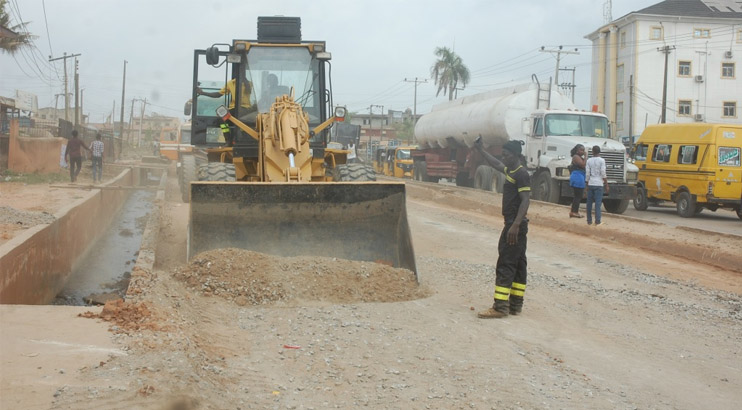
The government in its desire to improve and promote the well-being of the governed engages in developmental projects geared towards the achievement of this goal. In a developing country like Nigeria, the bulk of the developmental projects embarked upon by the government are infrastructural projects such as road construction―new roads and expansion of existing roads―railways, airports, schools, hospitals, dams, and electricity infrastructures like power plants, sub-stations, and transmission lines.
A major factor without which it will be impossible for any government to develop infrastructures is land to locate the projects. Most times, given the magnitude of the expanse of land needed for these developments, the government cannot rely on the land market to secure the many acreages of land needed for such infrastructures. So to get the needed land for infrastructure developments, the government acquires land compulsorily from private owners exercising its right of eminent domain. This refers to the right of a government to compulsorily acquire private properties for public good by virtue of its sovereign power over all lands within its jurisdiction. Compulsory acquisition is then the critical tool that the government uses to ensure the availability of land when needed for infrastructure development.
Part V, Section 28 (2) and (3) of the 1978 Land Use Act of Nigeria, vested all land of the state where such land is found on the Governor, or in rural areas, on the Local Government Chairman, and for the use of the common good of the society. By virtue of this Land Use Act, in Nigeria, individuals do not own or have absolute rights over land, they ‘occupy’ even after being issued a Certificate of Occupancy by the Governor, or a Right of Occupancy by the Local Government Chairman. This is because the certificate of occupancy or right of occupancy can be revoked at any time by the government in exercising its right of eminent domain.
When a property is compulsorily acquired by the government, the private owner or occupier of the acquired property is entitled to compensation for forfeiture of the use of his property. The compensation comes either as resettlement or as a financial settlement to the owner or occupier of such properties as stipulated in
Part V, Section 29 of the 1978 Nigerian Land Use Act. However, compulsory acquisition can be inherently disruptive with diverse challenges to be grappled with as project impacted persons are displaced from their homes, businesses, or communities hence the provision of compensation for ameliorative purposes.
Compulsory Acquisition and Compensation (resettlement and financial settlement) matters in Nigeria are guided by the stipulations of the relevant sections of the Land Use Act 1978, Mineral Acts 2007, and the 1999 Nigerian Constitution as amended. It is imperative to note that as stipulated in the Land Use Act 1978, compensation for compulsory acquisition is only for improvements on the land (crops, economic trees, and structures) and not on the land itself. Only ground rent paid for land by the occupier in the year of acquisition is computed in the compensation payment.
Despite the provisions of the Land Use Act 1978 and other laws or enactments set up to ease the government’s access to land for infrastructure developments, government agencies, and parastatals involved in developmental projects still experience difficulties in accessing land for the projects. The difficulties experienced in accessing land are attributed to the perception of people that the land belongs to them either as assets purchased with their ‘hard-earned money’ or as ancestral inheritance. The majority of Nigerians do not buy into the provisions of the Land Use Act. Furthermore, the method for the computation of the financial settlement stipulated by the Land Use Act results in a grossly inadequate financial settlement given that the land value is exempted in the computation. The result is the government or its agency’s inability to pay a just and adequate compensation due to the Land Use Act provisions. No wonder that when these lands are compulsorily acquired by virtue of the government exercising its right of eminent domain, the construction of the development projects is beleaguered with work stoppages, community unrest, litigations, and court injunctions. These problems most times lead to delays in project delivery with resultant project cost variations which triggers a very high increase in the overall project cost. The ripple effect often results in a series of abandoned projects.
Suffice it to say that matters arising from compulsory acquisition and compensation payment on acquired properties have greatly affected the ease of accessibility of land for development projects as well as the on-time delivery of ongoing infrastructure development projects in Nigeria. To overcome the problems, prompt payment of a just and adequate compensation on all project-impacted properties is recommended. However, this will involve determining the going or current market value of the impacted properties, and not the replacement cost value as directed by the Land Use Act of 1978. There is also the need to pay as compensation the going or current market value of lands compulsorily acquired, not the ground rent paid on the land in the year of acquisition as stipulated by the Land Use Act.
To achieve this, the Land Use Act as it relates to compulsory acquisition and compensation matters needs to be reviewed. The payment of just and adequate compensation will go a long way to assuage the project impacted persons and reduce the difficulties and problems associated with accessing lands for infrastructure development projects. The legislatures need to listen to the call from professional bodies like the Nigerian Institution of Estate Surveyors and Valuers for a review of the Nigerian Land Use Act of 1978 as it relates to the land ownership system as well as compulsory acquisition and compensation matters to bring it in line with the nation’s current needs and realities and international best practices. Addressing these will facilitate ease of accessing land for infrastructure development projects.



1 comment
Can you be more specific about the content of your article? After reading it, I still have some doubts. Hope you can help me. https://www.binance.com/ro/register?ref=V3MG69RO